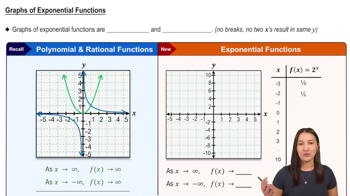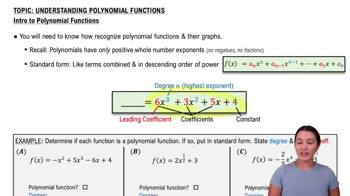Table of contents
- 0. Functions7h 52m
- Introduction to Functions16m
- Piecewise Functions10m
- Properties of Functions9m
- Common Functions1h 8m
- Transformations5m
- Combining Functions27m
- Exponent rules32m
- Exponential Functions28m
- Logarithmic Functions24m
- Properties of Logarithms34m
- Exponential & Logarithmic Equations35m
- Introduction to Trigonometric Functions38m
- Graphs of Trigonometric Functions44m
- Trigonometric Identities47m
- Inverse Trigonometric Functions48m
- 1. Limits and Continuity2h 2m
- 2. Intro to Derivatives1h 33m
- 3. Techniques of Differentiation3h 18m
- 4. Applications of Derivatives2h 38m
- 5. Graphical Applications of Derivatives6h 2m
- 6. Derivatives of Inverse, Exponential, & Logarithmic Functions2h 37m
- 7. Antiderivatives & Indefinite Integrals1h 26m
- 8. Definite Integrals4h 44m
- 9. Graphical Applications of Integrals2h 27m
- 10. Physics Applications of Integrals 2h 22m
1. Limits and Continuity
Finding Limits Algebraically
Problem 70a
Textbook Question
Analyze lim x→∞ f(x) and lim x→−∞ f(x), and then identify any horizontal asymptotes.
f(x) = (x2 − 4x + 3) / (x − 1)
 Verified step by step guidance
Verified step by step guidance1
Step 1: Identify the degrees of the polynomial in the numerator and the denominator. The numerator is a quadratic polynomial \(x^2 - 4x + 3\) with degree 2, and the denominator is a linear polynomial \(x - 1\) with degree 1.
Step 2: Since the degree of the numerator (2) is greater than the degree of the denominator (1), the limits \(\lim_{x \to \infty} f(x)\) and \(\lim_{x \to -\infty} f(x)\) will both tend towards infinity or negative infinity, indicating that there are no horizontal asymptotes.
Step 3: To further analyze the behavior of \(f(x)\) as \(x\) approaches infinity or negative infinity, perform polynomial long division on \(x^2 - 4x + 3\) by \(x - 1\).
Step 4: The result of the division will be a linear expression plus a remainder over \(x - 1\). This linear expression will dominate the behavior of \(f(x)\) as \(x\) approaches infinity or negative infinity.
Step 5: Conclude that since the degree of the numerator is greater than the degree of the denominator, \(f(x)\) does not have horizontal asymptotes, but it may have an oblique (slant) asymptote, which is the linear expression obtained from the division.
 Verified video answer for a similar problem:
Verified video answer for a similar problem:This video solution was recommended by our tutors as helpful for the problem above
Video duration:
3mPlay a video:
Was this helpful?
Key Concepts
Here are the essential concepts you must grasp in order to answer the question correctly.
Limits at Infinity
Limits at infinity involve evaluating the behavior of a function as the input approaches positive or negative infinity. This analysis helps determine how the function behaves for very large or very small values of x, which is crucial for identifying horizontal asymptotes.
Recommended video:

One-Sided Limits
Horizontal Asymptotes
Horizontal asymptotes are lines that a graph approaches as x approaches infinity or negative infinity. They indicate the value that the function approaches, providing insight into its long-term behavior. A function can have one or two horizontal asymptotes depending on its limits at both infinities.
Recommended video:

Graphs of Exponential Functions
Polynomial Division
Polynomial division is a method used to simplify rational functions by dividing the numerator by the denominator. This technique is particularly useful for finding limits at infinity, as it allows us to identify the leading terms that dominate the behavior of the function as x becomes very large or very small.
Recommended video:

Introduction to Polynomial Functions

 5:21m
5:21mWatch next
Master Finding Limits by Direct Substitution with a bite sized video explanation from Callie
Start learningRelated Videos
Related Practice







